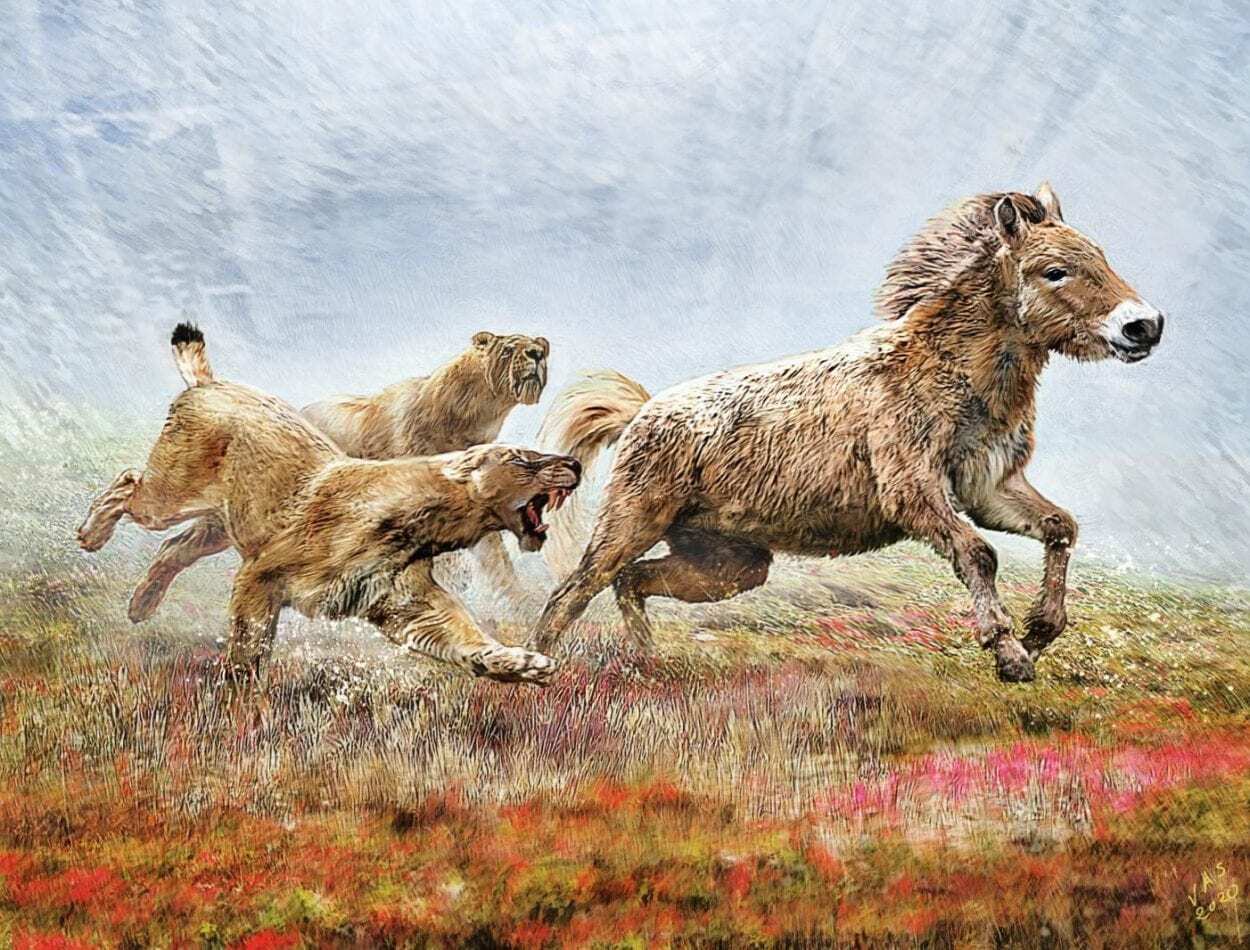Along with the woolly mammoth and the giant ground sloth, the sabre-toothed cats were probably among the most famous animals that lived during the Pleistocene Epoch and went extinct before the end of last ice age. Over the years, sabre-toothed cats have also been the subject of many research projects.
Now, for the first time, researchers from the University of Copenhagen have succeeded in mapping the entire nuclear genome of a sabre-toothed cat, the scimitar-toothed cat “Homotherium latidens”. Their DNA study reveals what genes were highly selected upon and important in evolution of the species.
‘Their genetic makeup hints towards scimitar-toothed cats being highly skilled hunters. They likely had very good daytime vision and displayed complex social behaviours. They had genetic adaptations for strong bones and cardiovascular and respiratory systems, meaning they were well suited for endurance running. Based on this, we think they hunted in a pack until their prey reached exhaustion with an endurance-based hunting-style during the day light hours,’ says co-first author Michael Westbury, Postdoc at the Section for Evolutionary Genomics, GLOBE Institute, University of Copenhagen.
Abundant species
The researchers extracted DNA from a Homotherium fossil recovered from Pleistocene permafrost sediments near Dawson City, Yukon Territory, Canada. This specimen was so old it could not be dated using conventional radio-carbon dating meaning that it was at least 47.5 thousand years old.
They then used a variety of modern genomic sequencing techniques to map the entire genome of the fossil. They used complex comparative analyses to modern living cat species such as lions and tigers and showed that this sabre-toothed cat were very genetically diverse, relative to modern cat species.
‘We know that genetic diversity correlates to how many of a given species that exists. Based on this, our best guess is that there were a lot of these big cats around. This also makes perfect sense given that their fossils have been found on every single continent except Australia and Antarctica,’ says Michael Westbury.
Synergies with medical research and bioinformatics
Their analysis also showed that the sabre-toothed cat is very distantly related to all modern cats. They diverged from them around least 22.5 million years ago. In comparison, humans and gibbons split between 15 and 20 million years ago.
‘This was an extremely successful family of cats. They were present on five continents and roamed the earth for millions of years before going extinct. The current geological period is the first time in 40 million years that earth has lacked sabretooth predators. We just missed them’ says co-first author Ross Barnett.
The researchers also emphasize that their study is an example of how different fields of research can benefit from each other. They hope to see similar bioinformatics methods used on many other extinct animals in the future.
‘Modern advancements within medicine and genetic research means that the sequencing methods are a lot better for us now than they were just a few years ago. On top of that, we know what specific genes are associated with in animals and humans from medical research. This means that we can infer a lot of things about extinct animals as we have done here. You could say that the fast progression of medical research has made this study possible,’ says professor Tom Gilbert.
UNIVERSITY OF COPENHAGEN THE FACULTY OF HEALTH AND MEDICAL SCIENCES
Header Image Credit : University of Copenhagen





